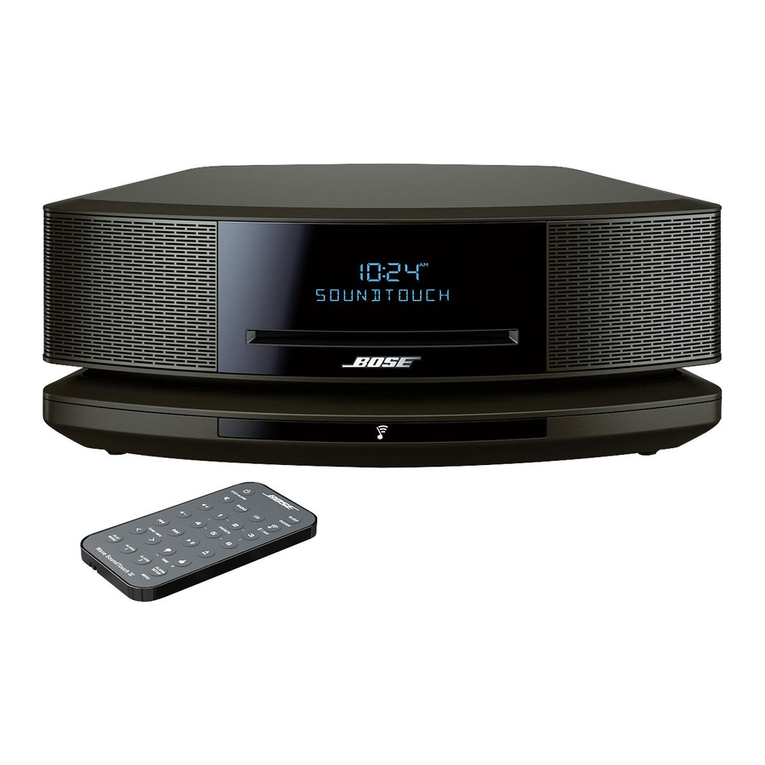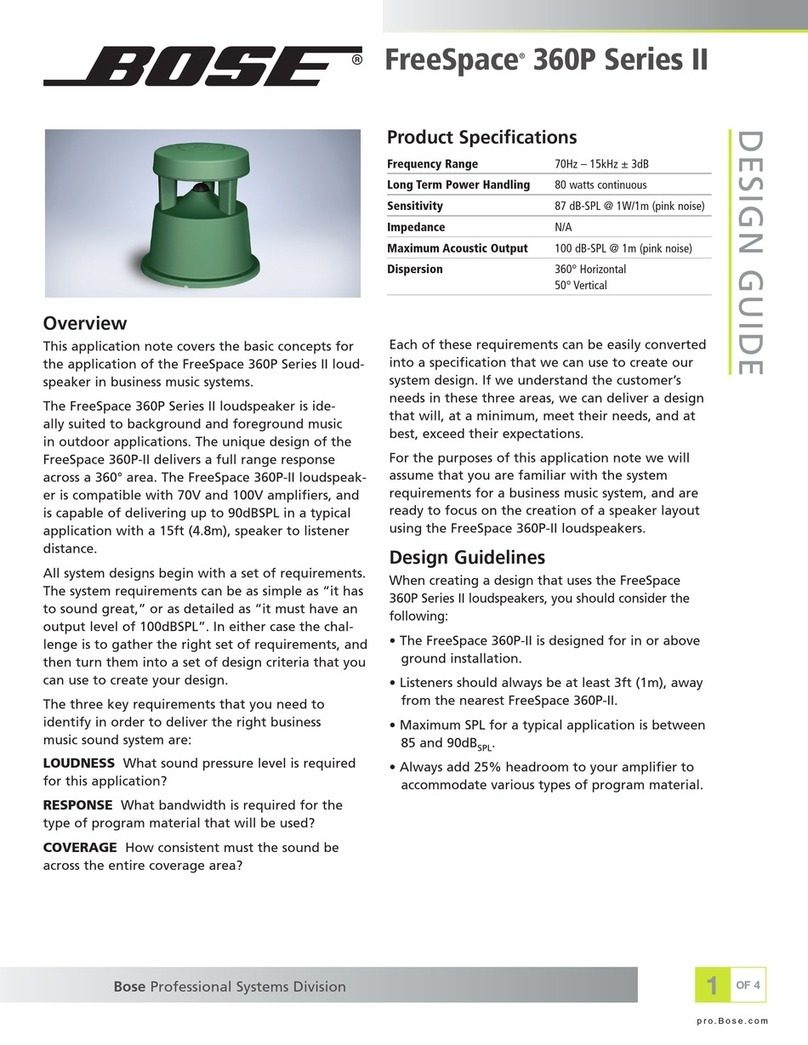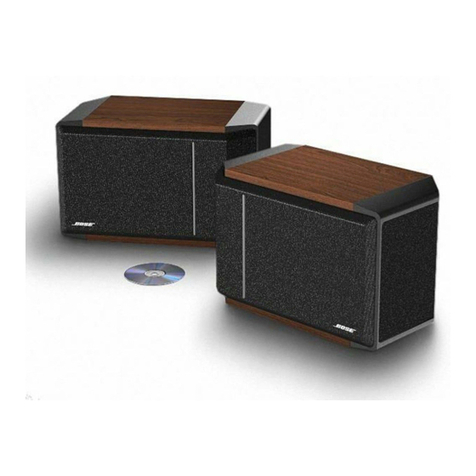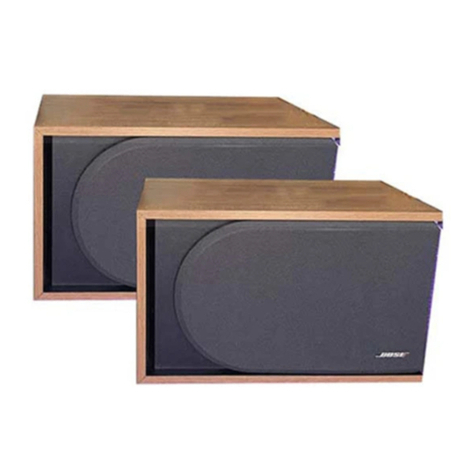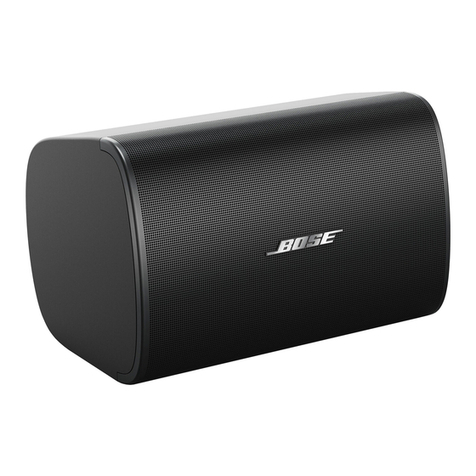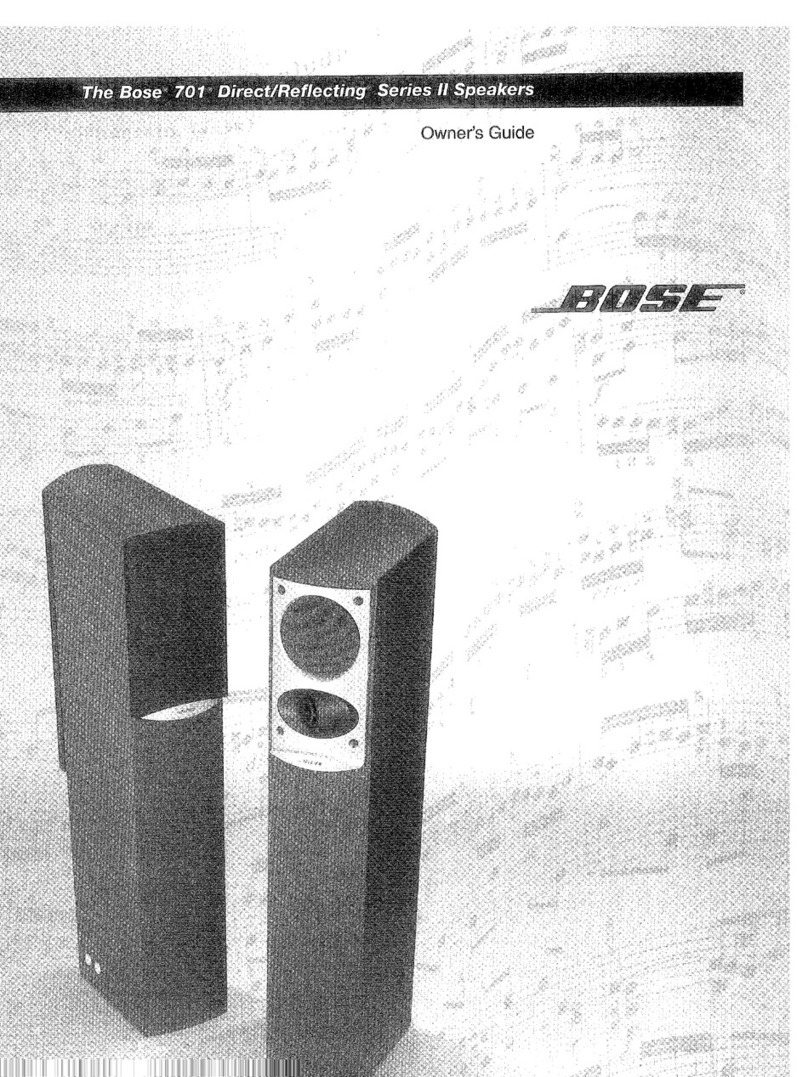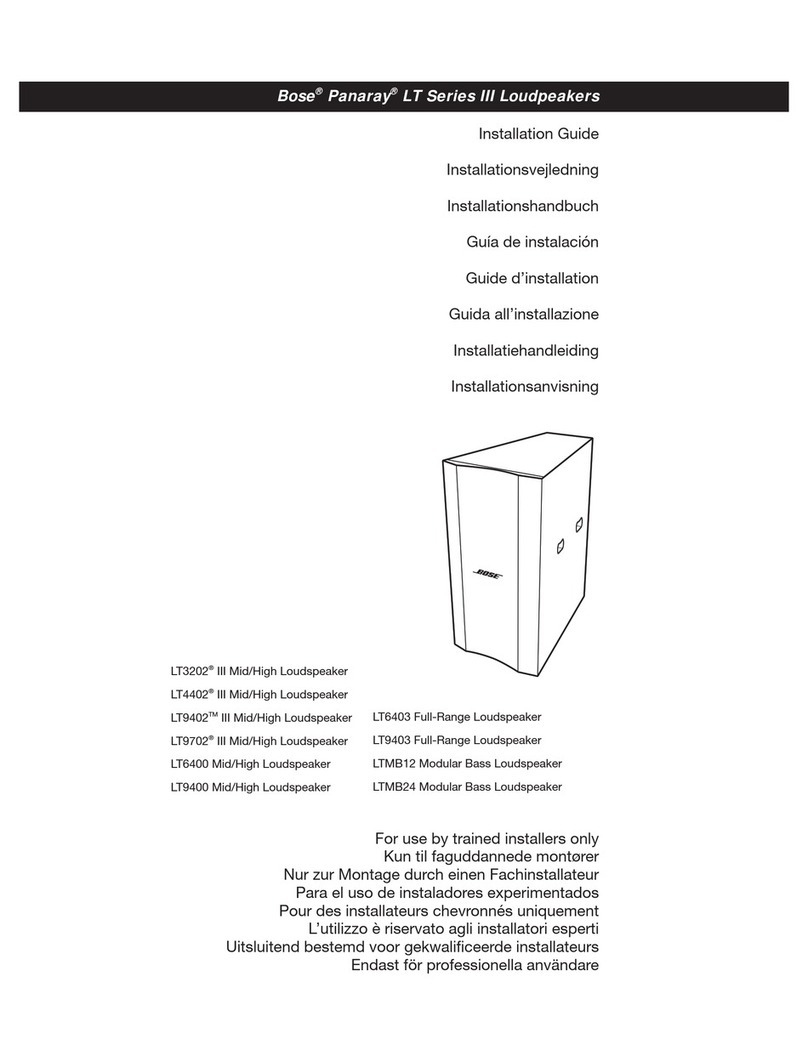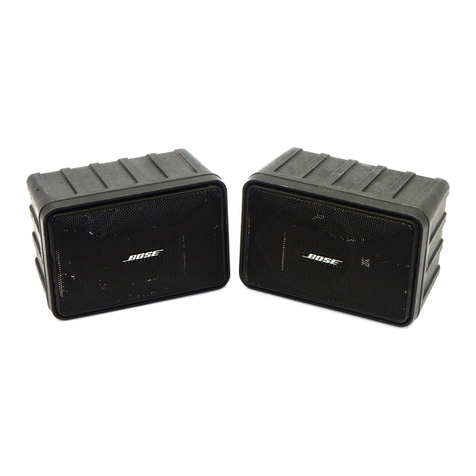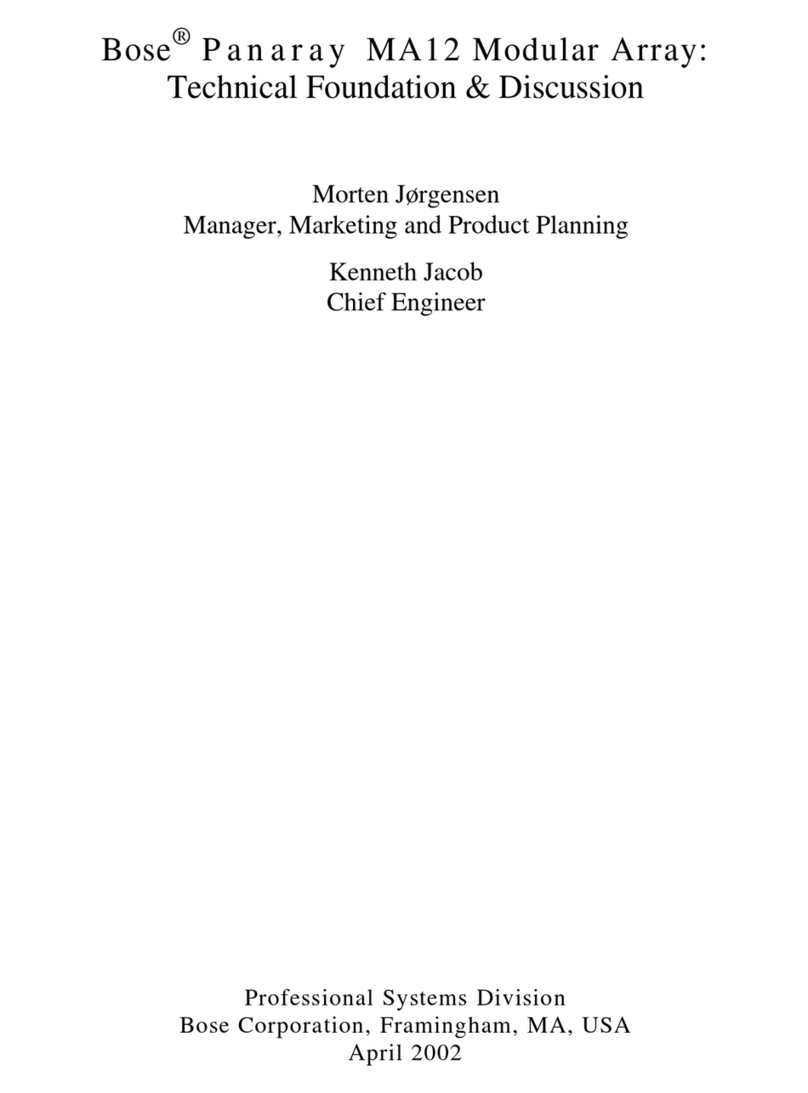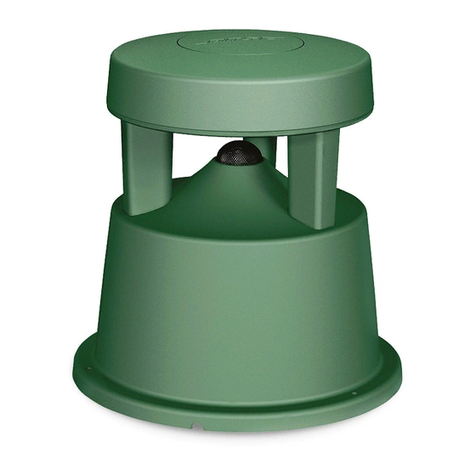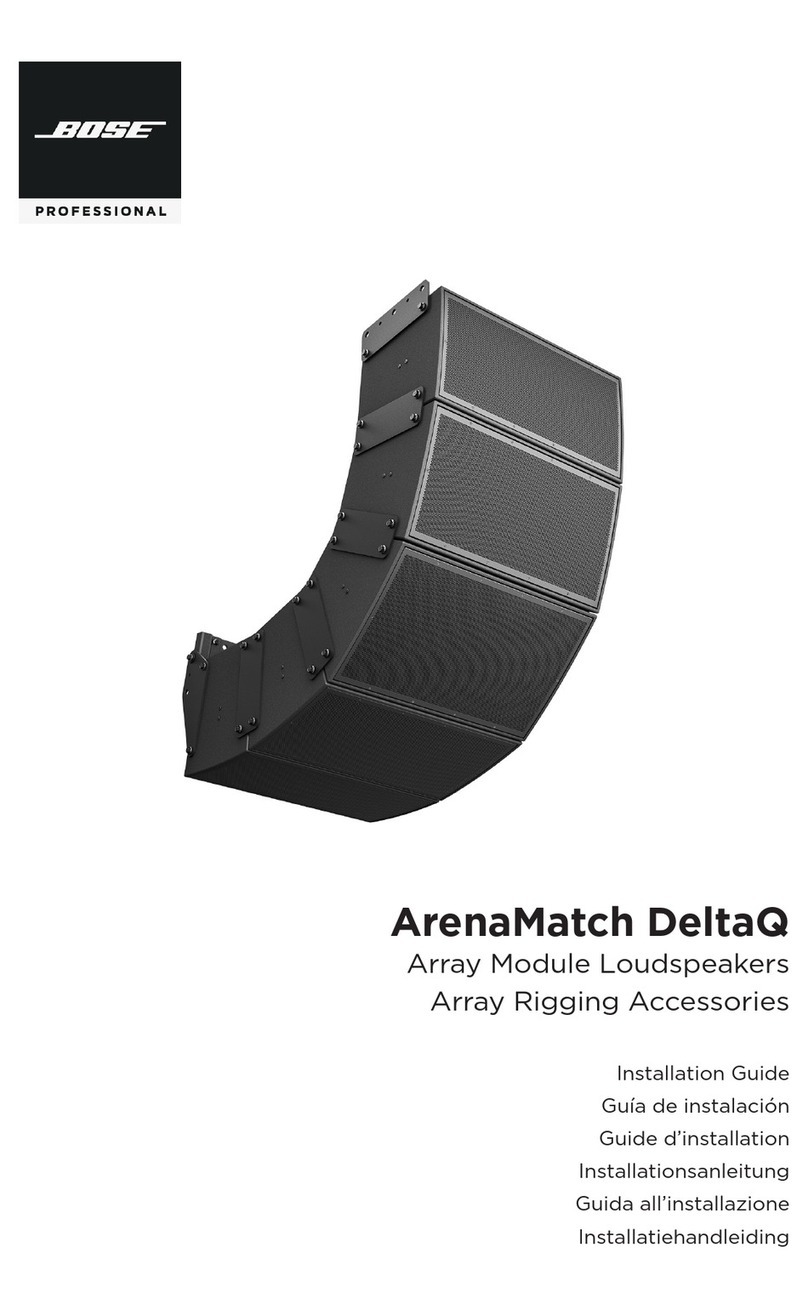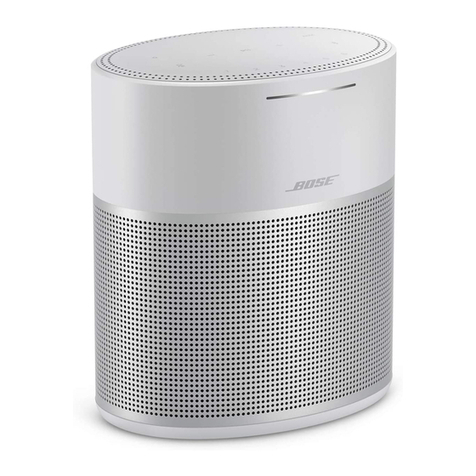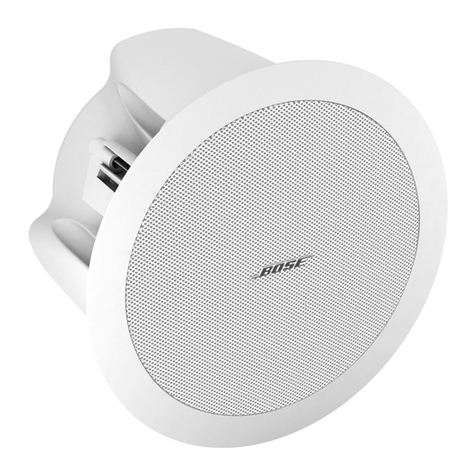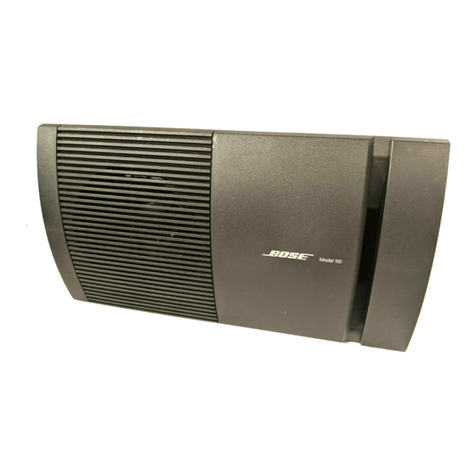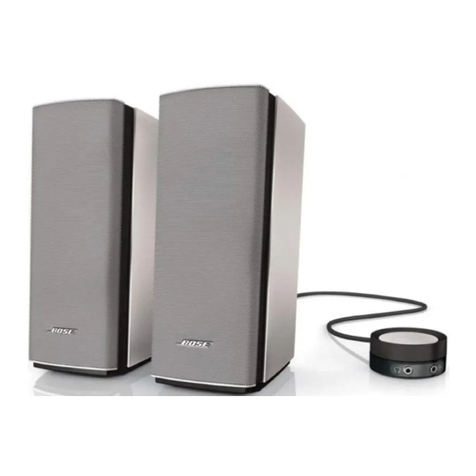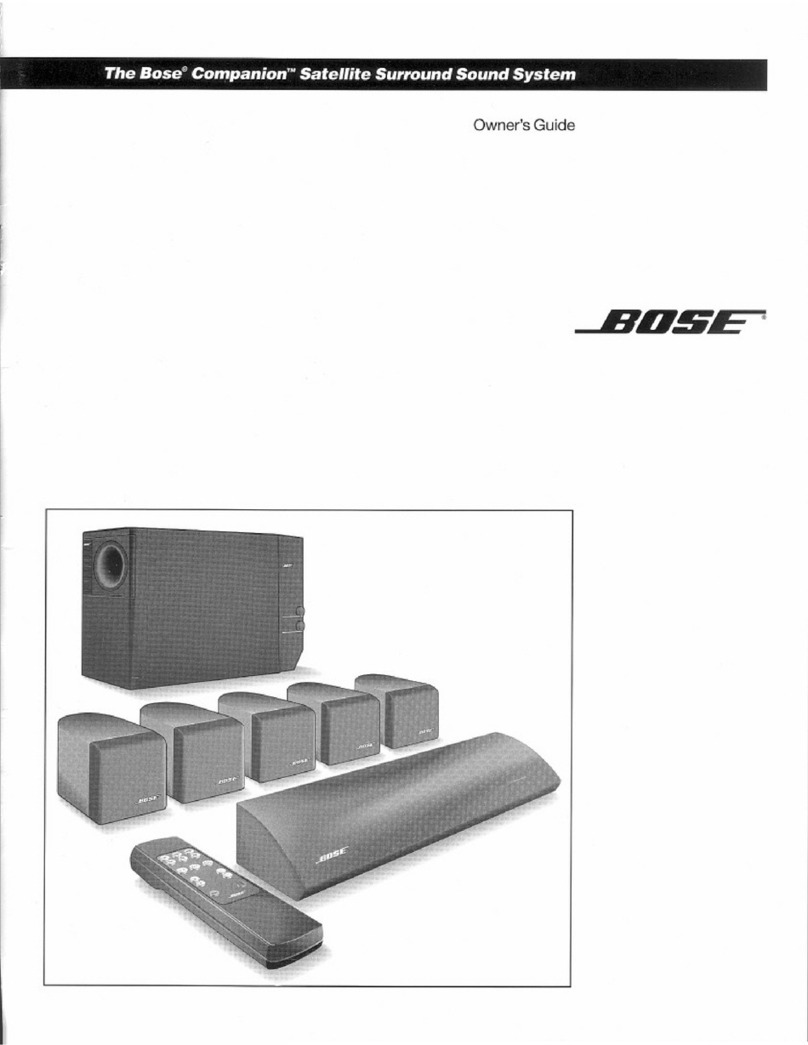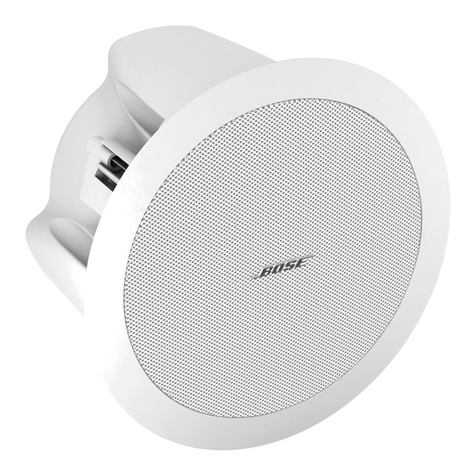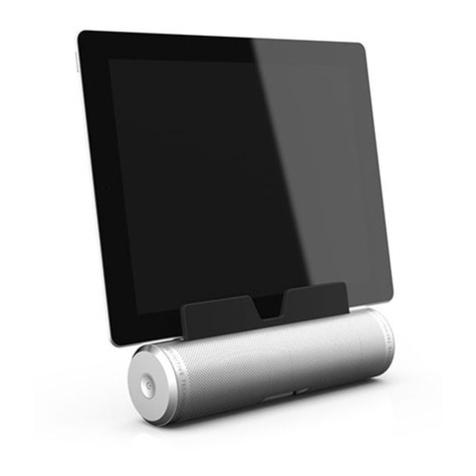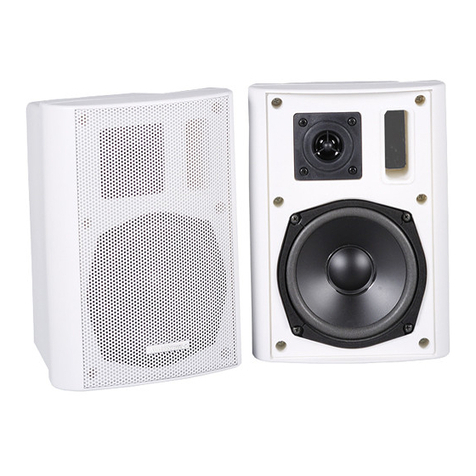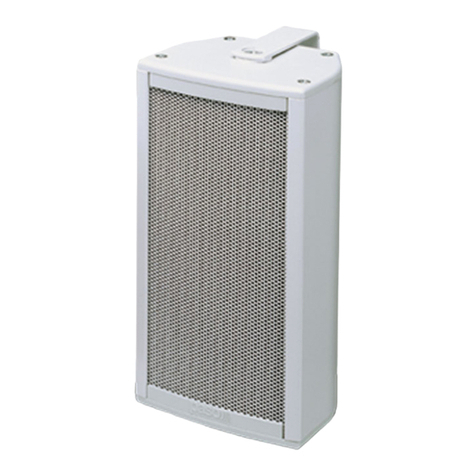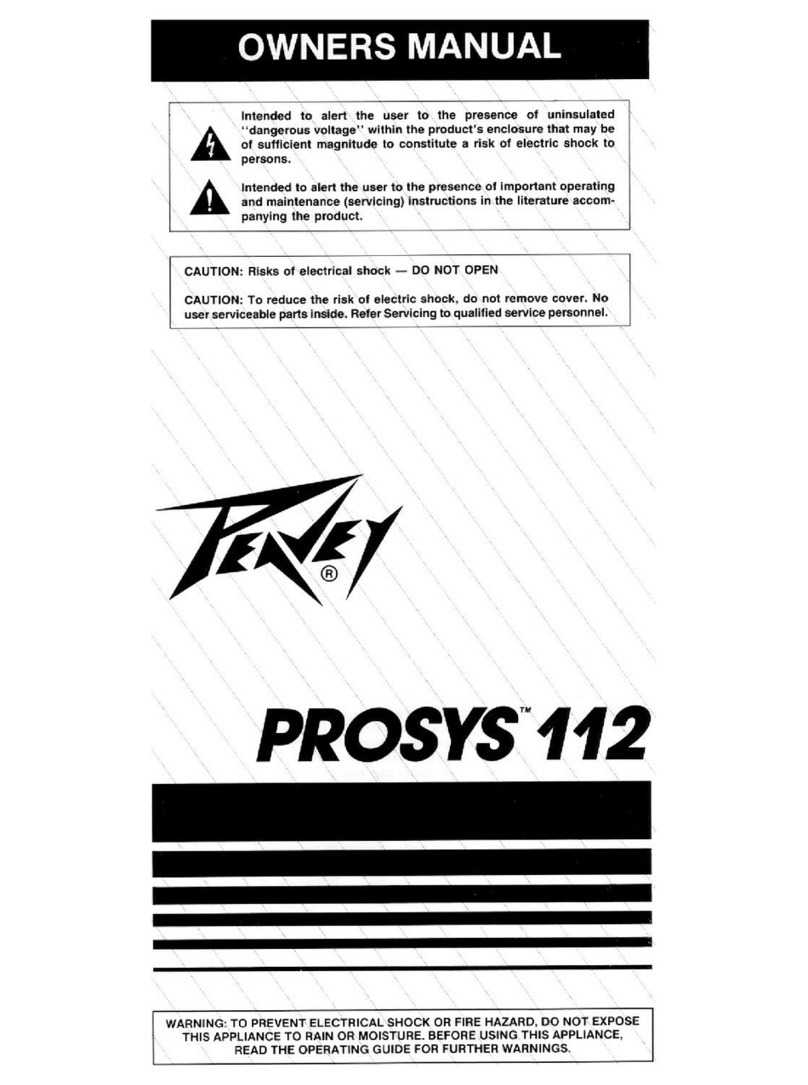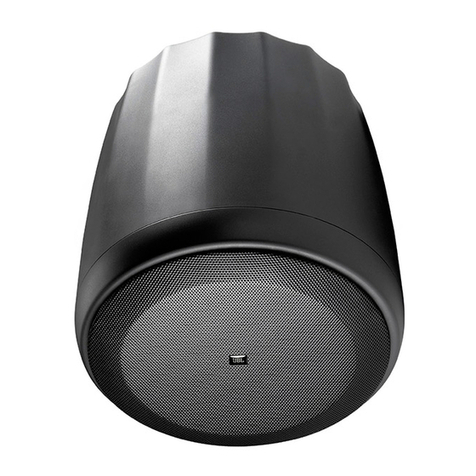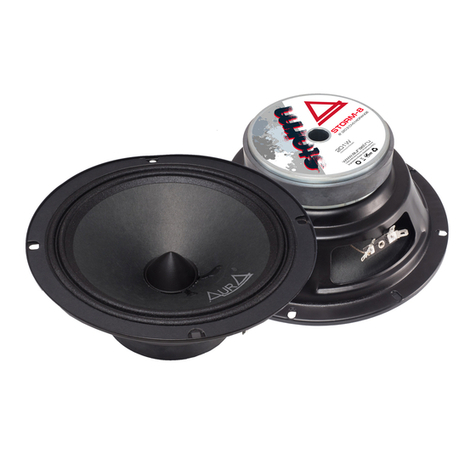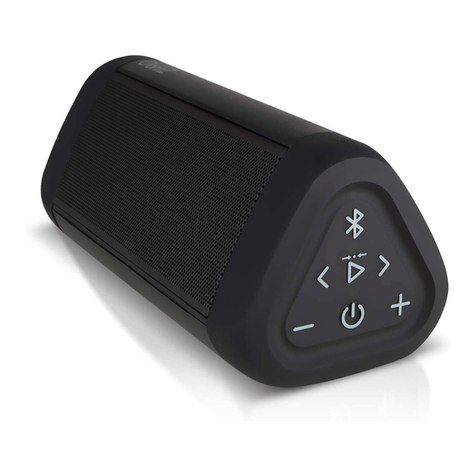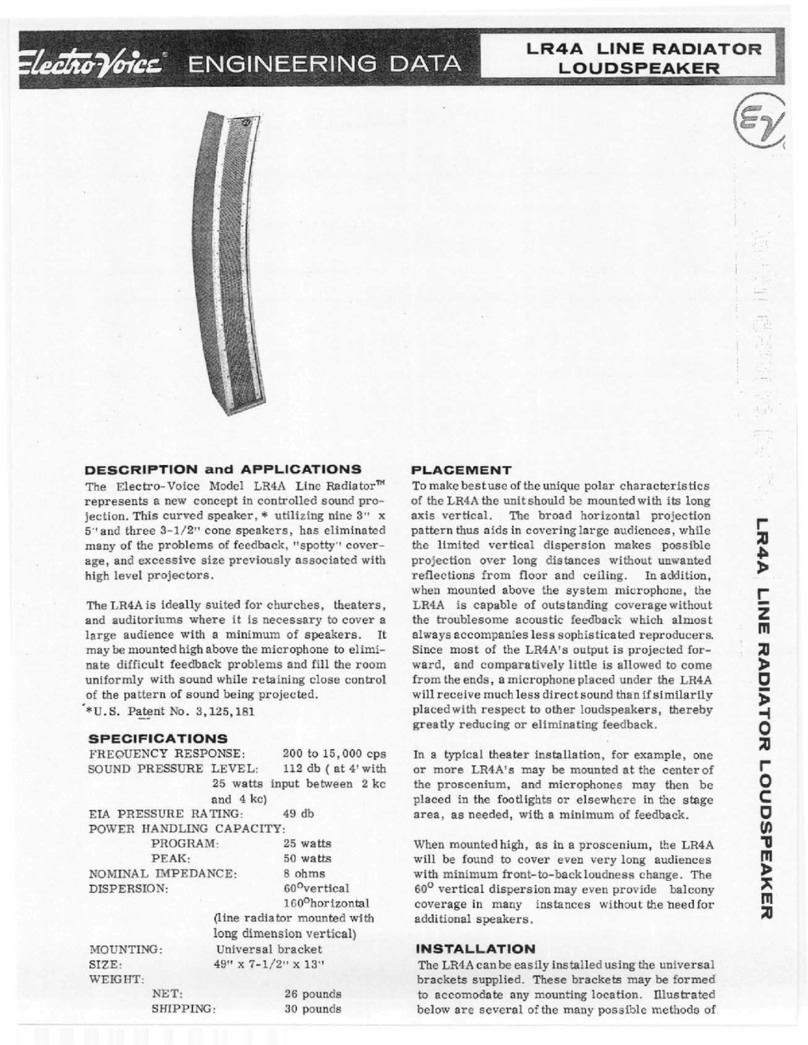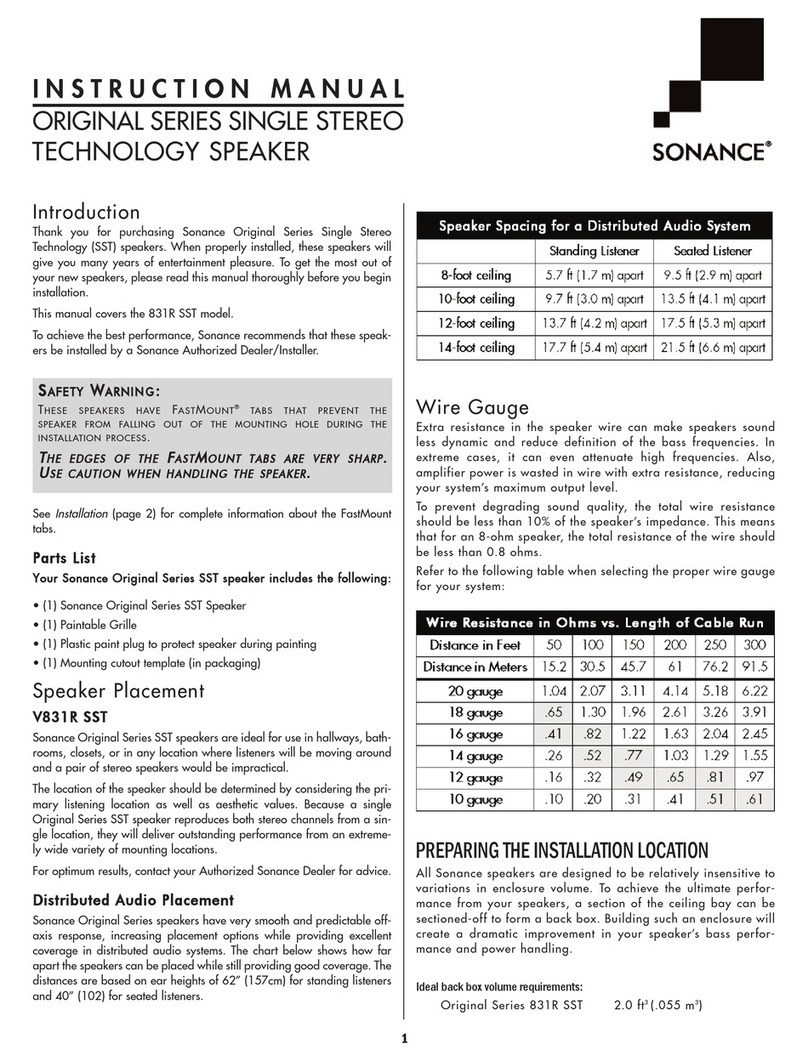
The U103 stage is a combination 2nd order 200 Hz high-pass filter and 5 dB 2 kHz dip (notch)
filter. The U104 stage provides the 5 dB peak at 200 Hz and the sharp band-reject between
100 and 200 Hz. Finally, the U105 stage is a combination 2nd order 20 kHz low-pass filter and
2 dB 350 Hz notch filter.
5. Bass Control
Thebasschannelsignalisderivedfromthesumoftheleftandrightchannelsthroughresistors
R129and R229andthroughinvertingop-ampsummerU2. PotentiometerVR3simplyadjusts
thegainofthestagebetween-6dBto+6dB. Intheflat(center)positionofthecontrol,thegain
is0dB. Adjustingthebassbyvaryingthegainoftheoverall basschannelhasbeendetermined
tobeacousticallyappropriatetocompensateforvariousplacementoptionsofthebassmodule.
6. Automatic Dynamic Loudness
In order to compensate for the ear’s loss of bass response at low listening levels, a BOSE
patented(4,739,513)automaticloudnesscircuitisemployed. Thiscircuitautomaticallysenses
thevolumeleveloftheincomingaudiosignalandproperlyadjuststheamountoflow frequency
bassboost. Whenthevolumelevelishigh, thefrequencyresponseofthecircuitisflat. When
the volume level is decreased (at the music center), the low frequency gain is increased in the
region between 50 and 150 Hz (see the bass channel frequency response graph on page 4).
This loudness contour, and the time constants associated with it, have been precisely
determined through psycho-acoustic testing and should not be confused with other conven-
tional loudness schemes.
Circuitoperation isasfollows: Leftandrightaudiooutputatpins 7 and1 ofU101aresummed
together by resistors R132 and R232. The AC signal at pin 3 of level detect op-amp U2 is
negative-peakdetectedandispresentedacrossemitterresistorR9. Thepeakdetectedsignal
has a (approximate) 4 second hold time and a 4 sec/10 dB release time constant which is
developed within the feedback loop of U2 (pins 1,2,3). The voltage across R9 is converted to
a current source through transistor Q3, and flows into pin 5 of transconductance amplifier U4.
U4 is placed in the feedback loop of op-amp U3 to create an inverse voltage controlled
bandpassstagesuch that increased current intopin 5 ofU4 causesthegainoftheband-pass
stage to decrease. The 55 Hz band-pass filter consists of resistors R10,11 and 15 and
capacitors C6 and C7. At frequencies above 200 Hz, the stage acts as a unity gain follower
(flat frequency response) through resistors R16,17, and 18. The over-all loudness contour
response is visible at U3 pin 1.
7. Low Frequency (LF) Equalization
Low frequency bass channel equalization and crossover is accomplished in two active filter
stages. The first stage consists of op-amp U3 (pin 5,6,7),capacitors C9 and 10 and resistors
R19,20, and21. It creates the sharp band-reject attenuation below 50 Hz. The second stage
consists of op-ampU5 (pin 1,2,3,), capacitors C13 and 14, and resistors R24,25,26 and 27. It
acts as a combination 2nd order 50 Hz high-pass and 200 Hz low-pass filter. The combined
responseofthesetwostagesisshowninthebasschannelfrequencyresponsegraphinFigure
1on page 4.
8
